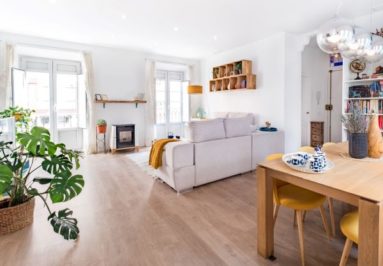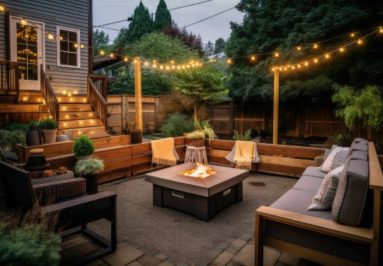The first noise you hear when someone enters your home is usually from the door slamming behind them. That is the alarm that someone is home, but what if that frightening noise never happened. What if there was silence that was followed by silence?
Previous suggestions for making your doors quieter include putting rubber bands around the door knobs both inside and outside. This approach, although a simple fix, is not effective and neither is the quality of the rubber bands as they tend to snap after four door slams.
1. Use Felt Pads to Quiet Slamming Doors
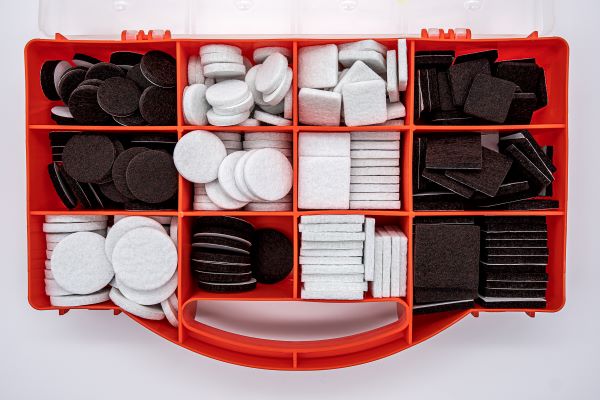
You may wonder if your neighbors are slamming their doors on purpose, but some doors are just prone to slamming because of their hinges or spring mechanisms. If you live in an apartment building you may be familiar front doors that slam behind you before you can get a chance to stop it.
One very effective way of silencing your door is to add felt pads to the inside of the door frame. When the door is shut, instead of shutting on the door frame material, it shuts on the felt pads which cushion the door. This, in turn, provides with a very quiet door. Because felt pads are about 1/8″ thick you may need to force your door closed all the way if you’re used to it closing on its own.
NOTE: Felt pads only help with slamming doors, they will not improve the STC soundproofing of the door.
2. Use Grease to Quiet a Squeaky Door
If it isn’t the slam that is bothering you as much as the squeakiness of the door hinges , then try greasing them with something like WD-40. Simply spray the door hinge pins and wiggle the door back and forth. If that still doesn’t work, then you can always remove the pins from the hinges and put some lubricant in the form of lithium grease on them.
If you live in an older home, squeaky hardware may be an issue for you, since the metal hinges may start to rust over time. If this is the case, consider fully replacing the hardware for your door, so both the hinges and the doorknobs.
3. Install a Door Sweep for a Quieter Door
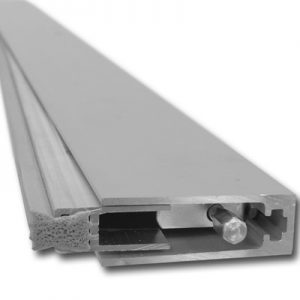
Some older houses also have rather large gaps that leave an undesired airflow underneath their doors. And, if there’s a gap for air to come through the bottom of a door, then sound can come in through that gap as well. Our rule of thumb states that a 1% gap can let in up to 50% of noise, so imagine how much noise that little gap below your door is allowing in.
In some cases, this airflow can even lead to a howl or a whistle which can get very annoying. Adding a LowBlokk Door Sweep or a LowBlokk Door Seal can help greatly in reducing outside noise, airflow, and noise caused by the airflow.
The LowBlokk Door Sweep is designed to create a tight fit at the bottom of almost any door and also canceling out any airflow that may be flowing through the underside of it. This will allow for a very quiet environment.
4. Install a Door Sweep to Soundproof a Door
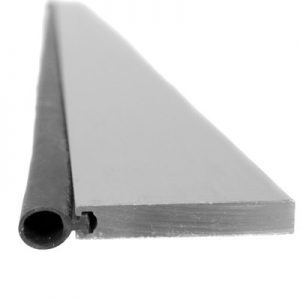
Although very similar to the door sweep, the LowBlokk Door Seal reduces any form of noise transfer through a tight fit against the threshold of the door rather than underneath it, like the door sweep. It comes in various sizes to fit any door and will fit on any door regardless of the material of the door threshold, as long as you have the right hardware.
Door seals keep sound from flanking around the top and sides of a door. You’ll notice that your door will close more tightly with a door seal and door sweep in place, as it’s ideal to use the two products together for a more soundproof door.
5. Use An Adhesive Door Bumper
If none of these meet your standards, then another easy fix would be to add an adhesive door bumper. You could apply it to the door itself or to the frame of the door. However, you need to watch the thickness of the bumper as it may cause the door to shut improperly. This is a great way to keep the door from making noise if it is one of those doors that like to shut on its own or if a child keeps slamming it shut.
An adhesive door bumper will work similarly to felt pads, but will likely provide more cushion, and at a slightly higher price tag. Although this product would be more expensive than felt pads, it would not be as expensive as a metal door seal, but would perform more similarly to the seal.
6. Install a Soundproof Door Cover to Increase Door STC
Once you’ve sealed up sound leaks around the perimeter of a door using door sweeps and seals, you should look at soundproofing that actual door. Many residential homes use hollow core doors, and since they have a very low STC rating, more sound will pass through the middle of the door than if the door were solid core.
Rather than investing thousands into a solid core door, you can spend a few hundred dollars on a soundproof door cover to help beef up the STC of your existing door. Soundproof door covers are made using mass loaded vinyl, which is a material commonly used in commercial soundproofing.




